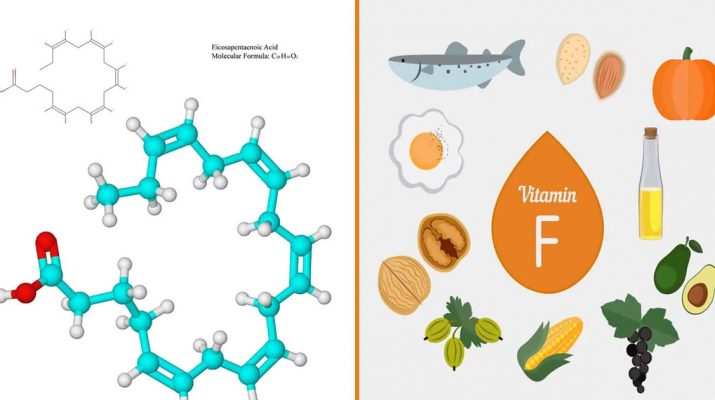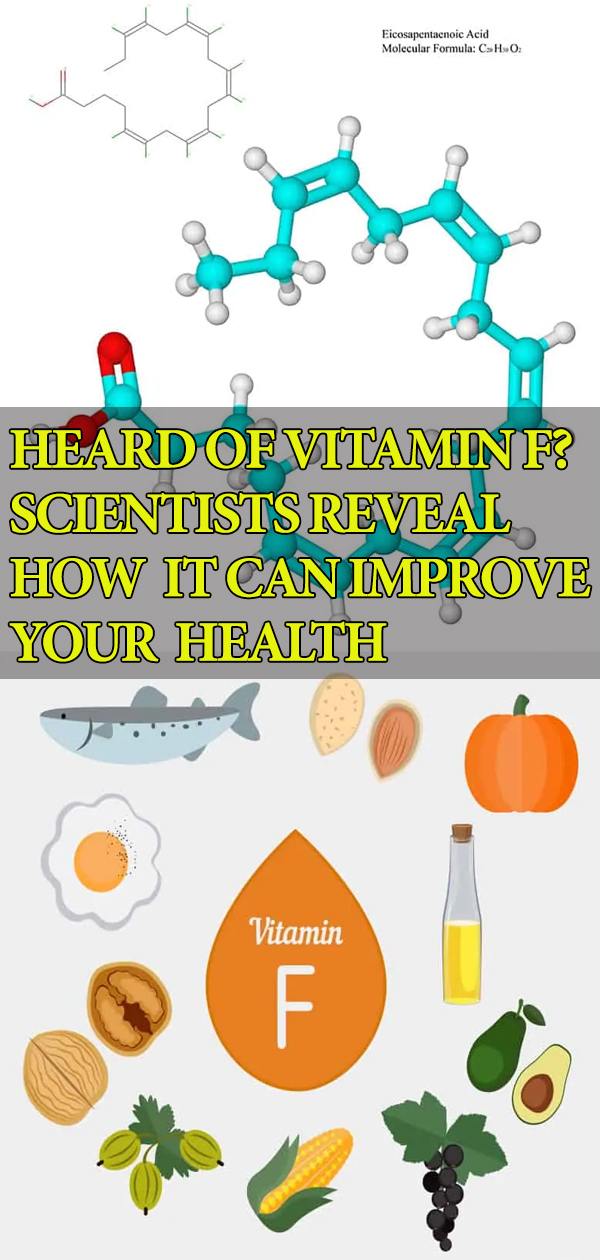We find vitamins in many foods, such as fruits, vegetables, nuts, and grains. The more you eat, the healthier you’ll be. Most of us are familiar with the significant vitamins; A, B family, C, D, E, and K. We may need refreshers as to what all they do, but we are aware of them. Have you heard of Vitamin F?
We’ll share how scientists reveal how it can improve your health. First, let’s find out what it is and what it does.
Vitamins: What Are They And What Do They Do? (And What Is Vitamin F)?
You likely learned about vitamins in health class at school, and ever since, you’ve heard or read about the importance of different vitamins. Scientists are continuously discovering more about them and the relationship they have with each other and with our bodies and brain.
Vitamin A
Women are probably pretty familiar with Vitamin A as part of their skincare regiment. We rely on Vitamin A, aka retinol, as a common ingredient to decrease skin wrinkles. You find Vitamin A in such foods as liver, carrots, spinach, eggs, milk, collard greens, cantaloupe, and pumpkin. This fat-soluble vitamin (stored in your fatty tissue and liver) serves a few different purposes:
- Aids in our ability to see in the dark
- Keeps our cells growing normally and in a healthy way
- Beneficial to the health of our skin
- It is a carotenoid when eaten from vegetables. Carotenoid or beta-carotene is an antioxidant. Antioxidants help to slow down or prevent damage to our cells. As a result, they can contribute to reducing the chances of getting diseases like cancer.
- Contributes to bone growth
- Affects reproduction
Without enough Vitamin A, your vision at night will decrease, your skin will get dry and flaky, and you will have a more difficult time healing from infections.
Vitamin B Family
Vitamin Bs get a lot of attention, as they should! That’s because science deems them to be the building blocks of your body. Nutrition experts cite eight B vitamins in that family, the B-Complex.
Some of them you may know by a different name and not realize they are part of the Vitamin B family. You can get your fill of B vitamins from different proteins such as fish, meat, chicken, dairy, and eggs. Your leafy green vegetables, beans, and peas also contain vitamin Bs, along with some types of enriched bread. Also, you can obtain folic acid in fruits and nuts.
There are many more sources depending upon which B vitamin you want more of. They are all water-soluble, meaning that they don’t stay in the body for long periods, and any excess or unused portions are excreted in our urine.
- B1 – thiamine
- B2 – Riboflavin
- B3 – Niacin
- B5 – Pantothenic acid
- B6
- B7 – Biotin
- B12
- B9 – Folic acid or folate
The general purpose of vitamin B is to help form red blood cells and to aid the process by which your body gains energy from the food you eat. Folic acid is especially essential for pregnant women as it can prevent congenital disabilities in the brain or spine of a baby. Additional purposes of the B vitamins include:
- Improve eyesight
- Supports brain function
- Digestion and appetite
- Nerve function
- Production of hormones and cholesterol
- Heart health
- Muscle tone
- Energy levels
- Maintaining the health of your cells
- Preventing infection
Vitamin C
Vitamin C, or ascorbic acid, is most commonly associated with helping you get over a cold. It is a water-soluble vitamin as well, so taking a lot of Vitamin C at one time is self-defeating. It is best to take it incrementally throughout the day. You can get vitamin C from fruits and vegetables.
Vitamin C is known for helping you get over a cold because it is an antioxidant. That isn’t its only benefit, however:
- Promotes healing
- Assists in the absorption of iron
- Necessary for your connective tissue, skin, and bones
Vitamin D
Women hear a lot about Vitamin D because, during perimenopause and menopause, when the estrogen levels aren’t up to par, women’s bones become more fragile. Taking a calcium supplement is usually recommended, along with vitamin D. Vitamin D helps our bodies absorb calcium. It also helps our immune system, nerves, and muscles.
Vitamin D may also be referred to as the “sunshine vitamin” because, after exposure to sunshine, our bodies make vitamin D. We also get it from egg yolk, saltwater fish, and liver. Bread and milk have been supplemented with vitamin D because it is so essential to our health.
Vitamin E
Vitamin E is another antioxidant that plays a role in our immune system and how we metabolize food. It is also often in a body or face oil to provide some nutrients to the skin for hydration. We get Vitamin E from the various oils and fats in our diet, as well as leafy green vegetables, nuts, and seeds. Taking Vitamin E as a supplement while on blood thinners is not advised without a doctor’s recommendation and supervision.
Vitamin K
Vitamin K is most recognized for its blood-clotting abilities. Without enough vitamin k, you will bleed too much. It also is a fat-soluble vitamin that helps your body make proteins that are used for your bones and tissues.
Most commonly found in a variety of lettuces or other green, leafy vegetables, avocados, kiwi fruit, and surprisingly, parsley, Vitamin K is terrific for your health.
So What Is Vitamin F, And What Does It Do?
Now that you have read a recap of the other vitamins, what is Vitamin F? The “F” stands for ‘Fatty acids.’ Fatty acids are a variety of oils created from food and sources of protein, such as our omega 6s and omega 3s, particularly linoleic acid.
The two fats or oils that Vitamin F consists of are:
-
Ala – Alpha-Linolenic Acid And Is An Omega-Three Fatty Acid.
It can convert into two other omega 3s:
- EPA – eicosapentaenoic acid: linked with lowering blood pressure and heart rates
- DHA – docosahexaenoic acid: correlated with reducing breast tissue density in women who are post-menopausal and overweight.
- Both of these omega 3s can also be obtained through dietary means such as salmon, mackerel, or sardines.
-
La – Linoleic Acid Is An Omega-6 Fatty Acid.
We cannot produce those fats in our bodies, so it essential that we include them in our diet. They have been proven to be extremely beneficial to our health.
ALA, DHA, and EPA offer these benefits:
- Decreasing inflammation throughout our body, including our brain.
- Aids in the growth and development of a fetus
- Improving heart health by regulating your heart rate to maintain consistency in its beats.
- Decreasing blood pressure
- Overall healthier aging in body and mind
- Aiding in maintaining brain function related to memory and problem solving
Linoleic acid supports our body by helping water transition in and out of our cells. Also, you can apply it to the skin in lotions or creams to be applied to the skin. That allows it to lock moisture in. LA is also to be attributed to these assets to our health:
- Improving our heart health
- The possibility of Type 2 diabetes may decrease if used in the replacement of saturated fats in your diet.
- May increase blood sugar balance if used in the replacement of saturated fats in your diet.
We tend to get enough omega 6s but are lacking in omega 3s, which is most associated with our heart health. It is recommended that we add LA and ALA to our diets in a ratio of 4:1 or 1.1 – 1.6 grams of ALA and 11-16 grams of LA per day. Currently, scientists estimate that the ratio is more like 20:1. So we must strive to add Vitamin F to our regime.
Where Do I Get Ala And La In My Diet?
While ALA and LA are omega acids, there is not a high level of either in fish, eggs, dairy, or meat, as other omegas are. They are more typically found in nuts, seeds, and certain oils.
You Primarily Find Ala In Seeds Such As:
- Flaxseeds and flaxseed oil: 6.5/7 grams per tablespoon
- Chia seeds: 5 grams per ounce
- Hemp seeds: 3 grams per ounce
- Walnuts: 2.5 grams per ounce
You Usually Find La In Oils And Nuts Such As:
- Olive oil: 10 grams per tablespoon
- Soybean oil: 7 grams per tablespoon
- Corn oil: 7 grams per tablespoon
- Sunflower seeds: 11 grams per ounce
- Pecans: 6 grams per ounce
- Almonds: 3.5 grams per ounce
It is pretty easy to see why our diets are disproportionate between the two. We most commonly cook with olive oil and corn oil while also being more likely to eat almonds and pecans. To add flaxseed, hemp seeds or chia seeds to your daily routine, you can easily add them to your protein shake or smoothie, your cereal, yogurt, oatmeal, or granola. You may also want to choose to use flaxseed oil in your cooking, as well.
Final Thoughts On Getting Your Vitamin F
Before this article, you may not have heard of Vitamin F, nor of how scientists have revealed its benefits to your health.
Yet, most likely, you had heard of your omega fatty acids. As part of the omega fatty acids, ALA and LA are so essential to your health, that science now includes them in the vitamin group necessary for everyday living. It’s amazing how things that come in such little packages can play such a significant role in our continued good health.


